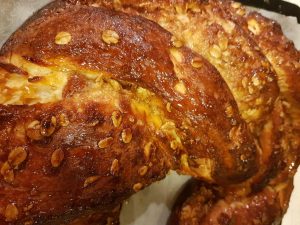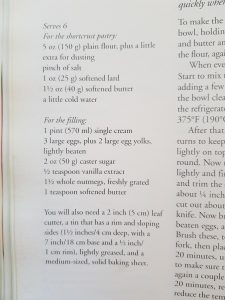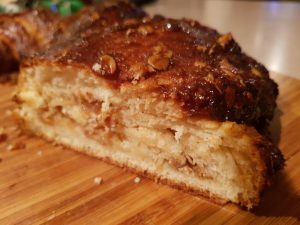
I’ve been doing some comfort baking – a spicy, oaty sweet bread topped with rosemary-infused syrup. Delicious!
But when I put my dough aside to rise, I discovered I’d used triple the required butter. And that got me thinking about how the recipe’s construction encouraged me to make the mistake.
Recipe reading needs reasonably high literacy. Good recipe writing requires a thoughtful understanding of how readers interact with the text while they’re also working with ingredients.
Using a recipe is complicated, with much reading, re-reading, short-term remembering, stopping and starting, and glancing between the ingredients list and instructions.
The process is complicated by the varying skills and techniques of cooks. Some people (the organised ones) assemble and measure all their ingredients before they begin. Others (like me) work through the recipe in sequence – completing one step before finding the ingredients for the next step. Some people are highly skilled and confident, and therefore need little instruction. Others need everything in detail.
The different ways that recipes group ingredients and provide instructions directly impact users’ success.
Many recipes, including the one I used for the bread, list all the ingredients together at the top. In this recipe the total butter required (150g) and the total eggs required (2) are listed as single ingredients lines, even though both the butter and the eggs need to be divided and used in two separate steps.
In the recipe I used, only 50g of butter is put into the dough, with the remaining butter used for the filling. My mistake was easy enough: I read the instruction – milk and butter heated until lukewarm – then flicked up to the ingredients list for the quantity. Easy – 150g butter.

When I got to Step 3, which told me to place the remaining butter in a bowl, I realised what I’d done.
At Step 3, any cook who hasn’t made the silly mistake I made needs to calculate how much butter to use – easy for some, but not so easy for others.
Recipes can easily written to make my mistake almost impossible, and to release cooks from the burden of calculating weights or quantities. If the ingredients list had been divided into three parts – For the dough, For the filling, For the syrup – the butter and the eggs would both have been divided appropriately, and clearly allocated to both the dough and the filling. The examples I’ve photographed from Nigella Lawson and Delia Smith show how easy this is to get right (the layout of Lawson’s list could be improved, but that’s a discussion for another day).

My bread recipe used numbered steps and very short, simple instructions written in a clear, declarative style (e.g., Transfer milk mixture …). I find this method of instruction much clearer than the chatty style used by both Lawson and Smith (e.g., To make the pastry, first of all sift …).

The chatty style requires me to read in full, then pull out and remember the instructions. It might be great for an introduction, but it’s less useful when you’re trying to follow a process.
There are two points here. Firstly, if you’re an amateur cook and you stuff up a recipe, remember the problem may rest with the recipe, not with you. Secondly, if you write documents that people need to use, take some time to think about how the documents will be used and whether you can structure the information in a way that will minimise mistakes.

And about my bread: it was delicious! Slightly more pastry-like than it should have been, and with a higher fat content than needed (because I used additional butter for the filling), but it really was the perfect comfort food.
